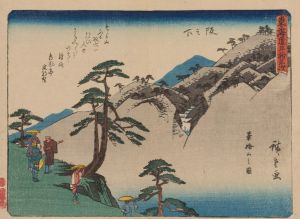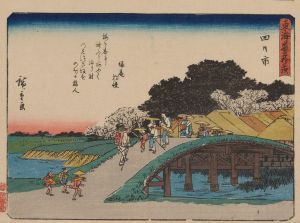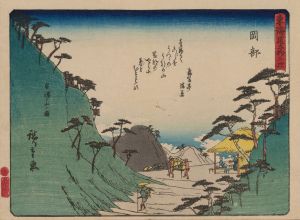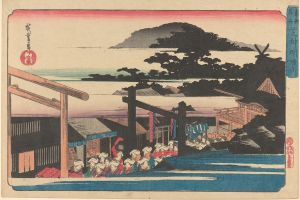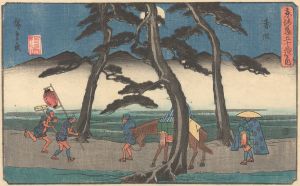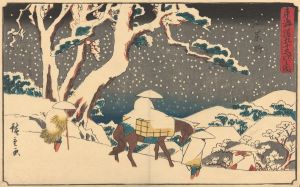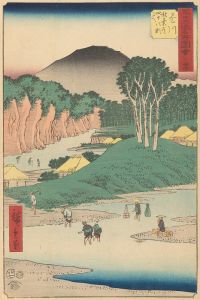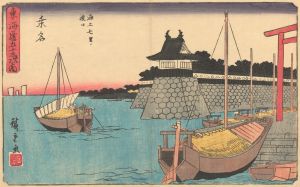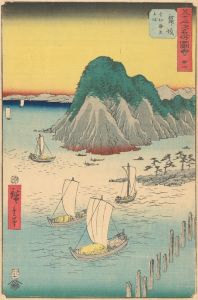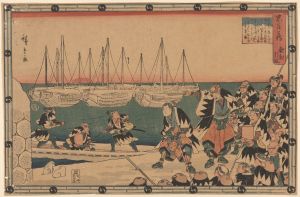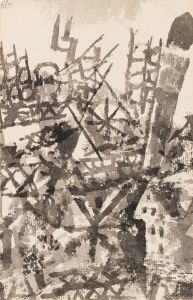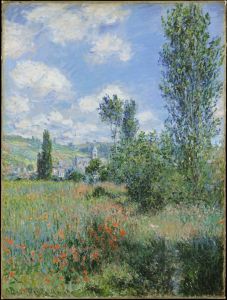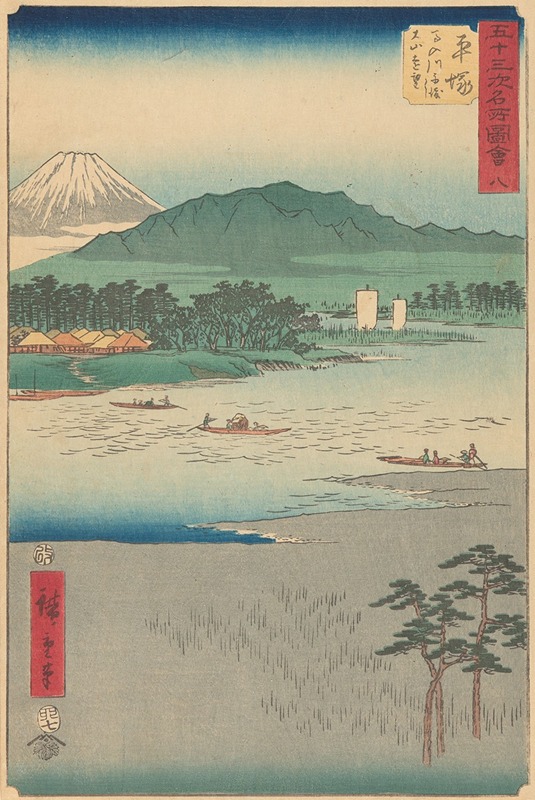
Hiratsuka
A hand-painted replica of Andō Hiroshige’s masterpiece Hiratsuka, meticulously crafted by professional artists to capture the true essence of the original. Each piece is created with museum-quality canvas and rare mineral pigments, carefully painted by experienced artists with delicate brushstrokes and rich, layered colors to perfectly recreate the texture of the original artwork. Unlike machine-printed reproductions, this hand-painted version brings the painting to life, infused with the artist’s emotions and skill in every stroke. Whether for personal collection or home decoration, it instantly elevates the artistic atmosphere of any space.
Andō Hiroshige, a renowned Japanese ukiyo-e artist of the Edo period, is celebrated for his landscape prints and depictions of everyday life. One of his notable works is "Hiratsuka," which is part of his famous series "The Fifty-three Stations of the Tōkaidō." This series, created in the early 1830s, captures the scenic beauty and cultural significance of the Tōkaidō road, a vital route connecting Edo (modern-day Tokyo) to Kyoto.
The "Hiratsuka" print is the seventh station in this series and showcases Hiroshige's masterful ability to blend natural landscapes with human activity. The Tōkaidō road was not only a major travel route but also a cultural artery that facilitated the exchange of goods, ideas, and traditions. Hiroshige's depiction of Hiratsuka captures the essence of this bustling thoroughfare while highlighting the serene beauty of the Japanese countryside.
In the "Hiratsuka" print, Hiroshige employs his signature style, characterized by bold lines, vibrant colors, and a keen attention to detail. The composition typically features travelers making their way along the road, set against a backdrop of lush landscapes and distant mountains. This juxtaposition of human figures and nature is a hallmark of Hiroshige's work, reflecting the harmonious relationship between people and their environment.
Hiroshige's "Hiratsuka" print is not only a visual representation of a specific location but also a reflection of the cultural and social dynamics of the Edo period. The Tōkaidō road was frequented by a diverse array of travelers, including merchants, pilgrims, and samurai, each contributing to the vibrant tapestry of life along the route. Hiroshige's work captures this diversity, offering viewers a glimpse into the daily lives and interactions of people during this era.
The "Fifty-three Stations of the Tōkaidō" series, including the "Hiratsuka" print, played a significant role in popularizing the genre of landscape prints in Japan. Hiroshige's innovative approach to composition and perspective influenced not only his contemporaries but also later artists, both in Japan and abroad. His work had a profound impact on the development of Western art, particularly the Impressionist movement, as European artists drew inspiration from his use of color and composition.
Hiroshige's "Hiratsuka" print remains an enduring example of his artistic legacy, celebrated for its beauty, cultural significance, and historical value. It continues to be appreciated by art enthusiasts and scholars alike, serving as a testament to Hiroshige's skill and vision as one of Japan's most influential ukiyo-e artists. Through his work, Hiroshige offers a window into the past, allowing contemporary audiences to experience the landscapes and life of Edo-period Japan.





